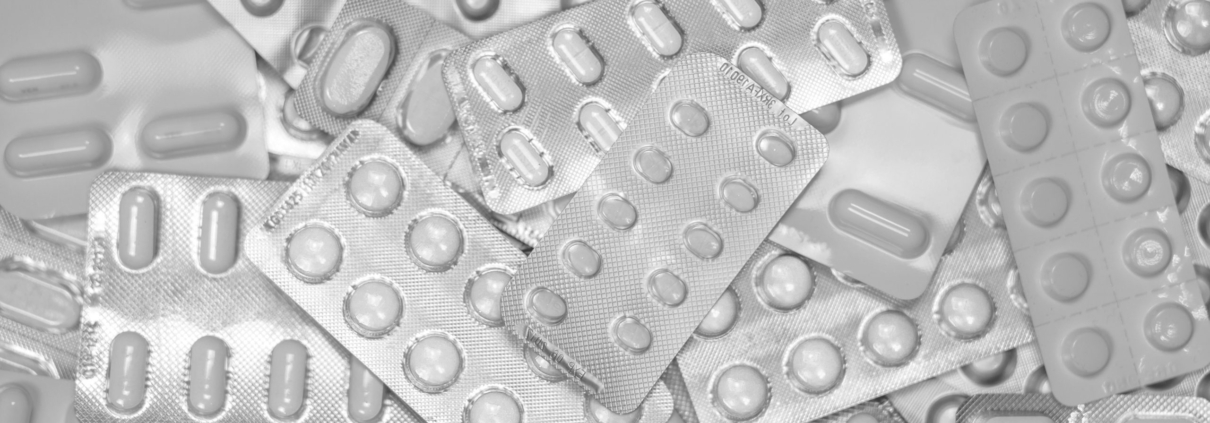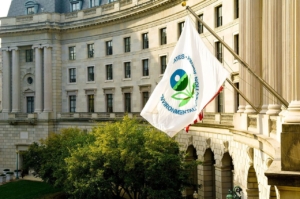The Chain Drain: Rethinking Pharmaceuticals After COVID
Here’s What You Need To Know
As the dust begins to settle from the coronavirus pandemic, the impact on the pharmaceutical industry is becoming clearer. Whether or not American drug manufacturers are ready, policymakers are scrutinizing the industry’s global supply chain and considering what steps to take to derisk it before another pandemic or other disruption hits. This scrutiny on supply chain and related trade issues had been mounting for some time before the pandemic, driven by the broader shift in public sentiment surrounding the benefits of free trade and globalization in the face of U.S. job losses, particularly in the manufacturing sector, that some attribute to unfair trade agreements.
Now policymakers in Congress and the Administration are advancing measures they hope will spur greater pharmaceutical manufacturing in America, protecting our national interests and returning high wage jobs to America. Indeed, some of these policymakers have been sounding the alarm for years about the economic and national security risks associated with keeping critical parts of our strategic industries, including the biomedical sector, overseas. Now the convergence of events and public sentiments has given them an unprecedented opportunity to advance their desired solutions.
Caught in the middle are pharmaceutical companies that must navigate these policy demands that could require enormous investments in new infrastructure amid a shake-up of the international supply chain. Meanwhile, other countries are watching, and their response to America’s policy direction could have its own implications for drug manufacturing and development. To understand how we got here, what policy shifts are underway, and how those shifts could impact the industry, here’s what you need to know.
Subscribe to Receive Insights
"*" indicates required fields
How Did We Get Here?
Blame Trump And China: Mounting public concerns about free trade and global supply chains were heightened by President Donald Trump’s 2016 campaign, which focused in large part on holding China accountable for its trade practices. His aggressive posture on China, coupled with a slew of events in the past several years that raised awareness of China’s human rights practices, has sent American public opinion about the nation plummeting. Today, a record 66 percent of Americans hold unfavorable views of China, an astonishing 40-point margin reflecting its worst reputation in recent history due in part to the country’s widespread failures in responding to the coronavirus and its refusal to be honest about the virus’s severity.
The New Bipartisan Consensus: Labor unions and progressive voices within the Democratic Party have fought against free trade for decades. They argued that overseas operations eliminated domestic manufacturing jobs that were the bedrock of the American economy. Republicans long resisted these protectionist pleas, insisting that unfettered free markets drove down the cost of goods, making them more affordable to Americans while bringing about economic growth that would buoy the American workforce.
Now, with too many factory towns still empty and growing public sentiment that globalization destroyed higher paying American jobs, some prominent free market-oriented Republicans have shifted their approach to addressing America’s wealth inequality. This new approach connects that gap with economic and security threats associated with unreliable trading partners like China, arguing those threats endanger the American people far more than they would benefit from cheaply-made goods. One example of this approach is Sen. Marco Rubio’s (R-Fla.) extensive China plan, released in February 2019, for a more aggressive U.S. response to China’s strides for global dominance. This plan came amidst a growing bipartisan consensus on the need to protect strategically important industries for both national security and economic interests.
Safety And Supply Concerns Before Coronavirus: U.S. regulators have expressed concerns about the safety and efficacy of Chinese-made pharmaceuticals, cautioning that their quality control and health standards are lower than those at U.S. facilities. Despite governmental warnings that the Chinese government is “inadequately resourced to oversee thousands of Chinese drug manufacturers” and, thus, imperil drug safety, the U.S. still sought its most common and needed drugs from China. Even prior to the coronavirus outbreak in the U.S., experts warned that problems in China could cause severe shortages of approximately 150 drugs upon which Americans rely, and the U.S. Department of Commerce reports that large majorities of over-the-counter and basic prescription drugs come from Chinese manufacturers, including many commonly used, low-cost generics.
However, the challenge is much greater than cost competition. Among the most glaring issues facing the U.S. in biomedical innovation is the significant amount of raw materials necessary to develop vital cell and gene therapies that is produced in China. Despite the FDA requiring these therapies be developed in the U.S., American companies are still relying upon China to provide the raw materials for life-saving treatments and cures. Indeed, as STAT notes, “the number of facilities making [so-called active pharmaceutical ingredients] in China has more than doubled since 2010.”
What Policies Are on the Horizon?
Congressional Action To Stop China From “Weaponiz[ing]” Drug Exports: Lawmakers on both sides of the aisle now fear China’s ability to “weaponize” drug exports, which could leave Americans with diminished access to critical pharmaceuticals. Sen. Tom Cotton (R-Ark.) and Rep. Mike Gallagher (R-Wisc.) introduced the Protecting our Pharmaceutical Supply China from China Act to address this challenge. The bill would “prohibit pharmaceutical purchases from China or products with active pharmaceutical ingredients created in China” and “create transparency in the supply chain by instituting a country of origin label of all imported drugs.” To alleviate some of the new burdens on American manufacturing, the bill would also provide economic incentives for manufacturing drugs and medical equipment in the U.S. Meanwhile, Sen. Marco Rubio (R-Fla.) joined forces with a bipartisan group of senators, including Sen. Elizabeth Warren (D-Mass.), to introduce the Strengthening America’s Supply Chain and National Security Act, which would “combat America’s supply chain risk and dependence on China for pharmaceuticals.”
Trump’s Huge Pharma Deal: In May, the Trump Administration assigned one of the largest-ever government contracts from the Biomedical Advanced Research and Development Authority to Richmond, Va.-based Phlow Corp., now tasked with producing generic medicines and pharmaceutical ingredients necessary to treat COVID-19 but that are currently made overseas, particularly in India and China. The contract, which could total upwards of $812 million over the next decade, is a “historic turning point in America’s efforts to onshore its pharmaceutical production and supply chains,” President Trump’s trade adviser Peter Navarro explained, arguing the project “will not only help bring our essential medicines home but actually do so in a way that is cost competitive with the sweatshops and pollution havens of the world.”
Buy American Iron And Steel … And Maybe Drugs: The Phlow deal isn’t the Trump Administration’s first effort to return manufacturing to the U.S. In July 2019, President Trump issued an executive order to strengthen “Buy American” laws. According to the American Action Forum, the order declared that “55 percent of the cost of manufactured domestic end goods must be made in the United States (up from 50 percent),” and, “The order further strengthened domestic requirements for iron and steel products.” According to a statement from Trump trade czar Peter Navarro in May 2020, President Trump is considering expanding this policy further to include “medical products and pharmaceuticals.” Navarro says this step would need to be accompanied serious deregulation to make it easier for pharmaceutical companies to do business in the U.S.
“Made in America” Sounds Good, but It Comes With Tradeoffs.
Supply Chain Reliability And Trade Consequences: Some critics of applying the so-called “Buy American” policy to pharmaceuticals say they’re worried that a supply chain that is not diversified could cause shortages and real problems in emergencies. According to a letter from the U.S. Chamber of Commerce and dozens of biomedical and other business groups, efforts to return manufacturing of health-related goods are worthwhile, but, “The United States simply does not produce all of the raw materials or intermediate goods that are essential to drug development,” and the policy “would only exacerbate the supply shortages.” The groups also expressed concern that, “as the world’s most innovative economy, the United States cannot shut itself off from the rest of the world. Turning our backs on trading partners during a crisis could damage our relationships long after this pandemic ends. If we implement localization requirements, many of our trade partners would assuredly follow our lead.”
Costs Passed To Patients: More than 250 economists signed a National Taxpayers Union letter expressing concern that a “Buy American” policy for biomedical products could make vital care more expensive for patients in the U.S. and harm our trading position with partners around the globe. The letter also notes, “A Buy America directive can also hamstring the ability of U.S. pharmaceutical and medical equipment manufacturers to meet our future needs if firms are denied access to essential foreign supplies.”
Meanwhile, the Pharmaceutical Research and Manufacturers of America says that building a single new biopharmaceutical manufacturing facility can take 5 to 10 years and cost as much as $2 billion, meaning increased investments by these companies are passed on to consumers. The American Action Forum has also warned about the economic costs, saying that any executive action would make only a minimal impact on purchasing via federal health care programs while driving up the costs and reducing the accessibility for many more consumers.
Risks to Intellectual Property: A common complaint among critics of a “Buy American” biomedical manufacturing policy is that it could devalue the intellectual property of researchers and companies who invested time and money into developing pharmaceuticals and vaccines. Their fears are well-founded in the context of the current pandemic, as anti-patent groups are already questioning how it will be possible to ensure equitable access to a future coronavirus vaccine if the companies producing the vaccine maintain the intellectual property, and researchers are facing mounting pressure to take the Open COVID Pledge to contribute their findings towards developing coronavirus treatments without maintaining intellectual property claims to their work. Amidst this pressure and scrutiny, actions by U.S. policymakers could force reactions by other countries that further undermines protections for the intellectual property developed by American pharmaceutical manufacturers, even though such protections are critical to creating life-saving treatments for COVID-19 and other illnesses the world faces.
Preparing for the Debate Underway
As support for bringing biomedical manufacturing home increases, so, too, do the challenges facing biomedical innovators. They must be prepared for the reputational risks associated with passing on investment costs to their customers, as well as the potential of losing their intellectual property rights. With threats arising from across the globe and across the political spectrum, pharmaceutical companies must be armed with the competitive intelligence necessary to advocate for their organizations and the patients they serve. Delve is ready to help.



